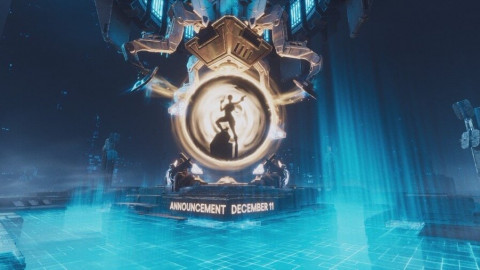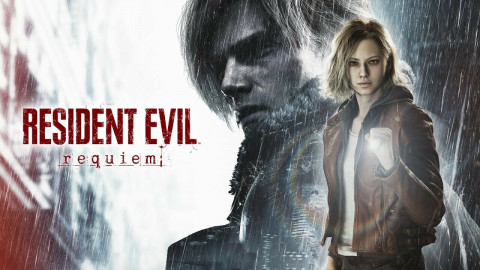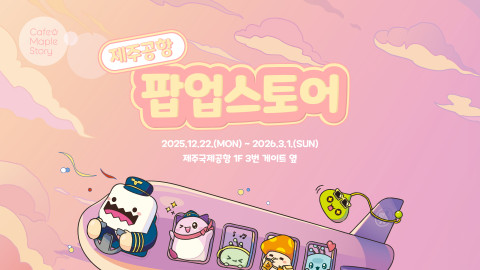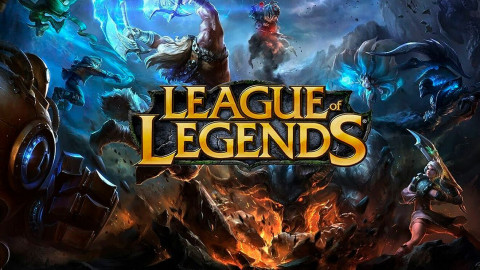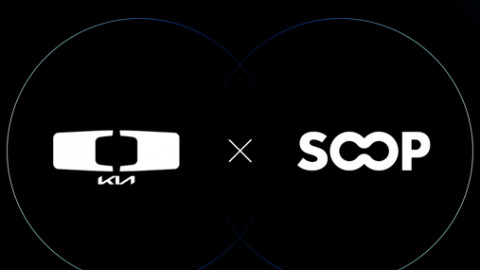Card games and board games in general often have a tangible feeling that is very hard to replicate in video games. However, Hearthstone comes very close. It doesn’t just feel like a card game, but also feels like a board game that is played on a game board with a lot of gadgets.
For that unique feeling of Hearthstone, we have to thank Ben Thompson, the Art Director of Hearthstone. The sense that you’re playing a physical card game being played on a physical game board and the satisfaction you get when you swing with Deathwing for 12 were all labors of love for Ben Thompson and his team of artists.
Although the responsibility of an art director can vary from place to place, we could see that he was passionate about Hearthstone. With a glint of light in his eyes, he talked about the importance of user interface and experience, including how everything from cinematics and sound to music and even marketing should work as one in order to achieve what makes Hearthstone really stand out from other digital card games.
Now, without further ado, here is our interview with Ben Thompson.

Please introduce yourself.
My name is Ben Thompson, and I’m the Art Director of Hearthstone for Blizzard Entertainment.
Tell us about your responsibilities as Art Director.
Primarily, I’m in charge of assuring that Hearthstone feels consistent in all of its visuals across each and every expansion, including cards, card backs, and boards. This also extends to user interface, making sure that it all feels integrated into the game. The card art is primarily done externally, and they all need to feel like a part of Hearthstone universe. All of these fall under the ‘Art Direction’ that I need to take care of.
It also means that I have to spend a lot of time with our marketing groups, for marketing campaigns and materials such as logos, and cinematics teams for game cinematics and visuals that go with those.
Do you play Hearthstone a lot?
I play a fairly regular amount. I wouldn’t say that I’m good, but I do get my card back every month. I try to learn about new things whenever a new expansion comes out, and I’m really excited to try out fun decks that can change what I’m playing and get me to Rank 20 or even higher. Either way, I’m really excited to open my packs. I haven’t done that yet. (Laughs)

What is your favorite Hearthstone card?
(That’s a hard question, you are basically asking me to pick a favorite child…) I would say Archmage Antonidas, and it’s not only because of the image itself but also the story that went into the image.
The artist of Archmage Antonidas is Wayne Reynolds, a British artist who did the art for a lot of other characters such as Anduin Wrynn. We didn’t have a lot of reference for this character. Sure, we did have a lot of lore about him: He was the greatest Mage of Azeroth; he was Jaina Proudmoore’s teacher. However, the only visual source about him was the marble statue outside of Stormwind. So, I still sent him what we had, and said: “I need you to ‘dress’ this up. I need you to make him impressive. You won’t be drawing the statue of him, but the man himself.” He answered back: “I got it, no problem.”
Sure enough, when he sent us the previews, all of them were awesome. After we ended up picking the final version, I liked it so much that I ended up buying the original copy from Wayne and it is one of the few original drawings of Hearthstone art that I have and look at every day.
There is one unintentional ‘easter egg’ in the art too. This whole exchange happened when we hadn’t even named the game yet. However, when you look at his hip, you can see the Hearthstone swirl, because Wayne thought it would look cool to have it there. When we ended up calling the game “Hearthstone” and I later came back to Antonidas to look at the art again, I saw it was there the whole time. I know it’s just a coincidence, but it was still very cool to see.

What is your favorite game board?
I have to give two answers for this one.
One is Stormwind, because it was our first game board and I had to spend a lot time to figuring how a game board should look like. We experimented a lot with the corner pieces: sizes of objects were changed, more details were put in while shapes were simplified - all of these things were done on Stormwind as we tried to figure them out. So, because of the journey that we went through on that board, I have to say that it’s a favorite.
For other reasons, I’ll say that Goblins vs Gnomes is my favorite board because it was the board where we really broadened what it means for a board to be interactive. You could do things that you couldn’t do on the first four and the Curse of Naxxramas game board. So, that was when we really started to push the boundaries of what’s possible on the game board, while not making it too distracting. It was really fun to do.
Actually, a lot of this points back to the love that we had for RTSs such as Warcraft, where you could click on a unit a few times and they’d say some ‘special’ quotes. So, we thought: “What could be the equivalent of those for Hearthstone? What would create that same feeling that makes you want to see what happens when you click on things?” That’s what we ended up doing for that.

Can you tell us how you ended up being a 6-mana 4/7 with a strange Battlecry effect?
Early ‘credits’ cards were written by Ben Brode and perhaps other design team members. It was their idea of having fun with the flavor texts. Some people might have had more input into their cards, but I could only pick the piece of art that could go on the card. Matt Cavotta is a good friend of mine who also did art for Hearthstone, and his art of me was one that felt maniacal, silly, and fun at the same time. I wasn’t the one who came up with the card text, and I certainly didn’t pick that I’d be a 6-mana 4/7, but I’ll take it. (Laughs) I won’t do a lot of damage, but it’ll be hard to get rid of me.

◼ About the Art Crew
You’ve mentioned how you used to be the only artist in the team. How big is the Art team right now?
Soon after the first year of development, which mainly dealt with the 2D aspects of art, we picked up John Zwicker, who did a lot of 3D work in the early phases of development, and Carl Harrison, who is responsible for technical art such as how we do the golden animations for cards. From that point, we extended to 11 people including myself. This number is just for the in-house developers and does not include the freelancers. I’d say we have about 70 to 80 people or even more on board when we actively work on an expansion just for the art side of development.
Can you tell us about the contributions you’ve made to the game as an artist?
I drew Rexxar, the Coin, Eydis Darkbane, a lot of initial card backs, and the first four game boards. As I was the lead… well, only artist on the team, I provided a lot of concepts and early visual on how the game would look like. So not only was I deciding whether we needed to have the ‘board’ that you see now, but I was also the one who was painting it. As the team has grown, I started to draw less but had more management responsibilities. However, I do try to draw as much as possible, so I still hold on to the logos as much as possible.
Do you also work on localized art?
Not with Hearthstone. However, I do keep localization in mind when designing the logos. Regional concerns often came up during the localization process, so we needed to be sensitive to issues like how much blood, gore and skeletons we have in our artwork. We had some arts altered in Curse of Naxxramas, but our goal going forward is having the same arts for all regions. No one region should feel like that they have a different or even worse version of a same game. It should always feel like the same game no matter who you are and where you are playing it, so we want to keep the same art as much as possible for all regions.
As an artist yourself, have you ever felt that you wanted to draw a card yourself when assigning them to freelancers?
Only sometimes, but I do feel that for sure. I remember going “Aw, that would be really fun to tackle,” for some assignments. However, I have to be very careful with my schedule, because working on a card’s art means that I have to spend less time elsewhere, and I normally need to be doing things like working on set logos. Also, I want to assure that other members of the art team get a chance to work on card art so that they have something that they can put their name on and have some ownership of. That’s really important for any creative endeavor.

◼ Art Commisions
When you commission card art to freelancers, do you also give them more information than just the art directions? Card texts and stats, for example.
Typically, Jeremy Cranford handles the external art management. The full cadence of the process is that he gets the full list of cards that are going into a set that are about 99% confirmed, and he writes about 2-3 short sentences that we try to keep somewhat vague but descriptive enough that they know what they are being asked for. Ideally, we try to keep the details at an amount that doesn’t make the artists feel like they’re being dictated.
The worst thing for an artist is to get a long line-by-line description that sucks out all of their creativity. Jeremy treads a fine line between between us getting what we need and artists creating a piece that’s very ‘them’ and plays to their stylistic strength. So, the artists usually get the title of the card and a couple of sentences.
From an artist’s view, it’s not really important to know the mana cost, attack and health - it won’t change the art that they are going for. However, some artists who are also Hearthstone players may ask, and we may tell them. In that case, they can do things like drawing a lot of armor for a taunt minion.
Was there ever a time when you received a commissioned art piece that did not turn out as you’d expected?
I can’t name any specific cards, but I know it has happened several times. I remember Jeremy Cranford showing me an art and saying “This isn’t what we asked for, but I kinda like it better. What do you think?” We’d then look at it together and talk about the merits of using it.
We’ve even switched the art of two cards around because the art felt more suitable for each other. Sometimes, we might change the nature of a card along the way - changing a card title is certainly an option because a new name can be more suitable for the art, especially when the gender and race of the art might have been changed.
Of course, often times the artists ask before suggesting that they’ll make dramatic changes, and although we try to accommodate as much as possible, it is not an option for named characters who already have certain expectations on how they look.

◼ Experience and Interface
Hearthstone often feels like a physical board game, to the point of it often feeling more dynamic and ‘real’ than an actual physical board game. Tell us how you’ve achieved that.
From the very beginning, we wanted Hearthstone to feel very physical. Hearthstone does get to do a lot of things that physical games don’t, but if we lean into the aspect of what it means for digital games to be physical, then it can feel even more real, like whenever the screen shakes when those 8/8 minions hit the board.
The other aspect is that it brings more ‘value’ to the collectible aspect of it. Cards, card backs, and boards - they feel like they have more value; they feel like that they are ‘there’. That has been our goal since early on, and now it extends to marketing and cinematics and it’s my job to convey to other groups why we want those things to feel physical even in a virtual space.
For example, Andy, (Andy Brock) who does all the sound effects, works very closely with John Zwicker (who does 3D modelling for the game boards) for sound effects of clickables and boards when players interact with them. He also works with the design team for ‘stingers’, which is what we call the voiceover lines whenever the cards are playable. He even works with the music team to get the music of each expansion right. This is what we call ‘Core Pillar’, ‘Stake in the Ground’, or ‘Pillar for the Team’ - whatever we might call it, it is one of the main goals that is shared by all 72 people on the team.
Hearthstone wasn’t originally a mobile game, but the mobile version that was released later had a distinctive mobile interface without sacrificing the functionality. How did you do it?
Hearthstone was never planned to be a desktop-only game, but we knew that we’d have to make some concessions on the user interface, because the size of the screen and the amount of space available is going to dictate what a given interface can and can’t do.
So, everyone was trying to figure out what the mobile version would look like in all aspects of the game - in-game screen, collections, play history, and everything in general. Since the play space shouldn’t be changed, we gave priority to the user interface for the four corners of a game board, and similar concessions had to be made in the collection manager and other menus.
We wanted to encourage players to spend more time in those menus, not just taking care of necessary business and getting out as soon as possible. Ultimately, our goal was to make those menus feel like they’d been specifically made for that platform from the beginning, and we weren’t afraid to make concessions in order to achieve that.
Although we had to make concessions, we were still happy about how it turned out - It did feel fairly fluid, and the game ‘moved’ in a way that feels natural. The whole path of creativity is filled with concessions. When you are trying to make something better, concessions and compromises have to be made in order to figure out how it’s going to be better, stronger, more informative, and different.

If you could pick one thing that you really feel proud of in Hearthstone’s user interface, what would it be?
To be clear, I’m not really in charge of user interface, but Derek Sakamoto and now Max Ma is the person mainly responsible for it. However, I’m still very much involved because I like user interface as much as I like art design. Another reason is that user interface is very integrated into Hearthstone; it’s not just a window to the game, but the game itself in a way.
I know I’ve mentioned this before, but I’m really proud of how we transitioned from desktop to mobile. It’s something that we are continuing to discuss in order to integrate new aspects of the game that weren’t there. It’s an ongoing, puzzle-like challenge because something new will be introduced and we’ll need to find a new way to solve it. The daily challenge to figure out how to make the user interface work across the current and future platforms is really important, especially since Hearthstone is the most widely published game in terms of platforms for all Blizzard games. That fact really gives us this sense of pride, and we really want to make it work for other platforms too.
◼ Journey to Un'Goro
Journey to Un’Goro is built upon the concept of ‘Dinosaurs’. How did you make them feel unique from each other especially when they can even look cliched in a way?
The first line of our style guide was ‘Dinosaurs are unique: We need to give them personality and make them individual.’ The artists needed to give them characteristics that make them singular, such as having a scar across an eye, a chipped tooth, and even jaws that look a certain way. We didn’t want any two dinosaurs to look the same way. The other thing that we reminded our artists was that these were dinosaurs in Azeroth, so they don’t have to look like the dinosaurs that we know of. Hearthstone excels when it takes something from World of Warcraft and then breathes in this ‘flair’ of Hearthstone, and we certainly accomplished that with Un’Goro.

Journey to Un’Goro feels like it has more in-game effects than previous expansions. Is this going to be a trend in the future? And how did you address the concerns of them being too distracting?
It should be somewhat ‘flashy’ because it is a piece of user interface. It’s telling the player that there’s new information here. However, it could happen too many times in certain decks, and we certainly don’t want to make them overwhelming. There’s a certain line that you tread in between trying to tell a story but not getting in the way of the game itself. We don’t want to distract the players from the game, but the keywords should feel unique.
Golden animations have been discussed previously, but they really do look better than ever. Was there a change in the process on how the animations are done?
Most people on the art team have done the animations at some point depending on schedule and how many we need. For Journey to Un’Goro, the bulk of them were done by our new artist, Nicholas Kenny; and he’s done an amazing job. He really achieved what we previously couldn’t do with golden animations, and I think he knocked it out of the park.
Also, we’ve improved on the tool that we use to make golden animations, which was previously very limited in order to accommodate phone versions. So, now that we’ve optimized it well enough to open up the possibility of having new animations without making it ‘cost’ too much in terms of resources, it must have helped Nicholas to achieve what he was trying to do along with his talent.
Thank you for the in-depth interview. Is there anything that you want to share?
Meeting the fans one-to-one in local Fireside Gatherings in Korea and other Asian countries and getting the chance to sit down and talk about Hearthstone, especially knowing that phone is just as popular medium for gaming was a rare and unique experience to say the least. It's an experience that I'll never be able to replicate in front of a desk.
Getting to share the joint love of the game was priceless, and I really appreciate that I was given the chance for me to do so. I hope that you'll enjoy the Journey to Un'Goro as much as we did.

Sort by:
Comments :0


